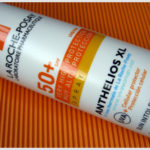
Why I use a chemical sunscreen sometimes
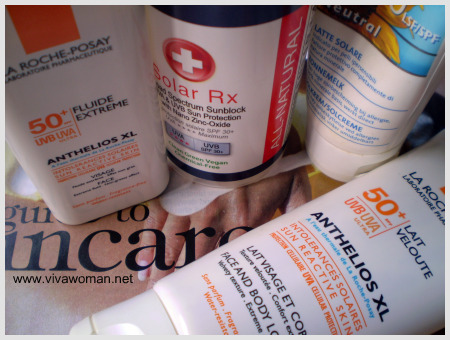
If you come back often enough, then you may have noticed my preference for physical sunscreens over chemical ones. However, this doesn’t mean that physical sunscreens are definitely more superior or that all chemical sunscreens are lousy.
Chemical vs physical sunscreen
By now, I believe most of you are already fairly familiar with the difference between chemical and physical sunscreens. For those who don’t, chemical sunscreens contain synthetic chemical substances to absorb UV radiation while physical sunscreens contain inert mineral particles specifically zinc oxide and/or titanium dioxide to reflect UV rays like a mirror. However, I’ve also mentioned that physical sunscreens may actually reflect and absorb UV rays in my entry mineral-based sunscreens are the best.
European chemical sunscreens are superior
I prefer physcial sunscreens because it is a personal choice and I like to believe that zinc oxide is the most superior sunscreen ingredient based on the FDA sunscreen monograph. I ignore most of the chemical sunscreens out there because I am not interested in using so many synthetic ingredients on my skin. HOWEVER, that does not mean that chemical sunscreens are inferior. On the contrary, I think highly of the European chemical sunscreen formulations containing Mexoryl XL and SX or Tinsorb and I sometimes use them. Whether or not these ingredients are as comparable or better than zinc oxide I cannot say but it should be noted that a sunscreen formulation ought to be viewed in totality rather than just based on one single ingredient.
PPD rating measure protection against UVA rays
The reason why I think highly of these European sunscreens is because many of them actually provide a PPD of at least 15, which blocks out about 95% of the UVA rays from your skin (source). Now, UVA rays are the ones responsible for most of your skin aging process and PPD is the rating used to determine a sunscreen’s UVA rays capabilities. It is unlike the SPF ratings which only measures protection against UVB rays.
La Roche Posay Anthelios range with PPD28
Unfortunately, there are no PPD ratings done for US produced sunscreens which I’m using; not even those containing high amount of zinc oxide. Hence, I’m not entirely sure how well my skin is protected against the UVA rays under our hot sun. As for Japanese sunscreens, all I know is the PA+++ means a PPD of more than 8 but I don’t know exactly how much. Thus, when I head out to the beach or the pool under the hot sun, I actually use La Roche Rosay Anthelois Fluid Extreme or XL Lait Veloute with a PPD28 just to be sure. Yes I do, because I have a huge pigmentation problem.
European sunscreen formulations with high PPD for pigmented skin
Hence, if you have pigment problems or photosenstive conditions and you don’t mind using a chemical sunscreen, I would recommend you to go for European produced sunscreens because you can find out the PPD rating and how well protected are you against the UVA rays. La Roche Posay Anthelios XL is one you can try and I have a review here. The other one is La Roche Posay Uvidea XL with a PPD18 recommended by Pei Fang.
Comments
Leave a Reply
You must be logged in to post a comment.

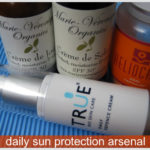
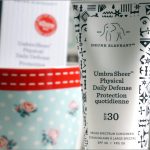
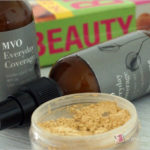








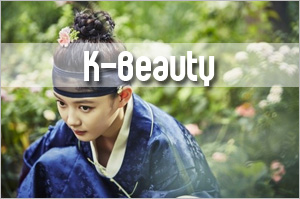
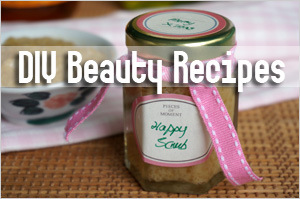
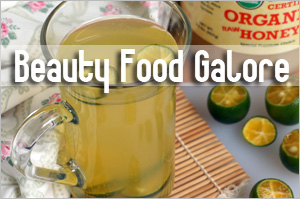
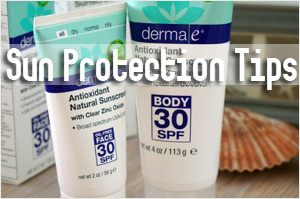
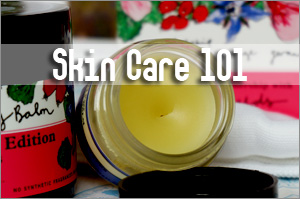
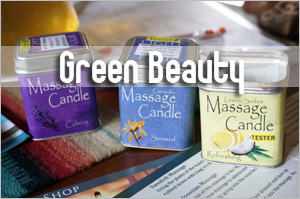
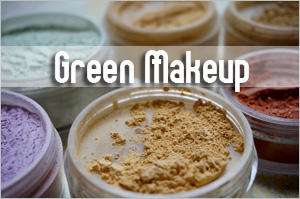
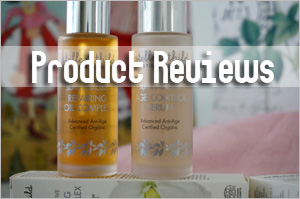
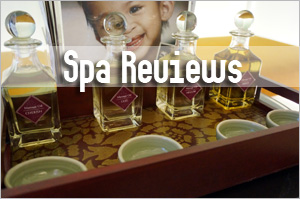
How can i know how much PPD for Heliocare 90? it’s a European brand, right? thanks!
Marj: I don’t seem to be able to find any info on its PPD. I know you can try calcalating PPD at this Ciba site. https://www.ciba.com/pccibasunscreensimulator/. It estimates PPD’s and SPF’s based on ingredient list and percentages. However, I hadn’t had much luck registering so I’m not sure how it works. The other way is to write in to the company to ask.
I saw La Roche Posay in HK but it was so expensive – I couldn’t bring myself to pay RM100+ for a sunscreen. How much is it in Singapore?
ParisB: I can’t remember exactly. The Anthelios Lait Veloute was S$30+ while I got the Extreme Fluide for under $20 cos of a special promo.
The LRP’s Uvidea is close to S$50. But there are often 20% discounts.
I think Heliocare is American.
Btw Sesame, I googled out your new sunscreen! ?
From the description, it sounds wonderful! Pls write a review on it soon!
pf: Haha…all of you are very Internet savvy! Okay, give me a couple of weeks to ensure the quality.
i was wondering about a point about mineral products. Apparently, mineral makeup due to its high content of zinc oxides and titanium dioxides, they look quite ghastly in flash photographs. could this also be a reason for preference of usage of chemical sunblock or makeup bases rather than mineral bases by professional makeup artists?
Raelynn: Yes, you’re right. There’s this shine in mineral makeup and usually the face can look really shiny/greasy in photos. The matt ones are slightly better. Mineral sunscreens on the other hand tend to give a whitecast, so that’s another problem…but some pple can only use that sort of sunscreens cos of sensitivity to chemicals. I’m not sure about makeup artists but my guess is they go with established brands that they’ve been using and these are usually not so natural in terms of ingredients.
Normally, flash photography is used at night like dinners, parties, etc.
Just a general question, wld anybody use sunscreen as base for evening makeup??
I’m comtemplating because I hardly attend such things and I don’t wanna buy a makeup base to use occassionally in view of the shelf life. Although I bought one recently, but I have not used. So, I might sell it.
pf: I guess there’s no harm since it’s just once in a while; just that the sunscreen is wasted in the sense cos it’s not doing what it’s supposed to. But like you said, if you’re buying a makeup base just to use occasionally, perhaps using your existing sunscreen will suffice if it can act as an effective makeup base. ?
Actually, the makeup base I bought recently also has SPF lah. But I like my LRP Uvidea. I feel more protected from the sun.
pf: Ya, it’s better to use the sunscreen than to rely on the makeup base alone in the day.
Hello sesame,
I’m looking for sunblock lotion for body. Do you have any recommendation? and do I need to get those with really high SPF/PA?
Evelyn: No, SPF30 is enough. It is not much difference with SPF50. But are you keen on using chemical sunscreen?. If yes, check out the La Roche Posay Lait Veloute – see my review using the link in the article. It is for both face and body and very effective. Great for outdoor sports especially.
Hi again Sesame,
Thanks for the info, I just recently got familiar about sunscreen types from your blog.
Is there any cheaper alternatives to La Roche Psay Lait Veloute? haha.. it’s abit pricey for me.
Thanks again
Evelyn: Apart from LRP, I’m not so sure about the others and how well they protect without looking at the ingredients or PPD. For example, Neutrogena has their Helioplex range which are cheaper but I can’t say how well they’ll protect you against the sun rays compared to the European ones.
I’ve been following your blog and I must say you have an abundance of information to offer so thank you.
I, just like you, am seesawing back and forth between zinc oxide and mexoryl. I have combination skin, with a very oily T zone just like you.
So it seems you have two sunscreens that you *mainly* use right now, which is La Roche with Mexoryl. What do you use for Zinc Oxide sunscreen now?
UVA protection is what keeps you from getting pigmentation problems right? According to the chart you posted Zinc Oxide also has both strong UVA and UVB coverage. But you just really never know lol.
Also, have you tried Erich Kreider’s sunscreen yet?
Teri: Hey, I’m glad to know you find some of the info here useful. ? On a daily basis, I use my mineral sunscreen with zinc oxide because I spend 90% of the time indoors. If I’m heading out to the beach or swimming, then it’s the LRP one with Mexoryl. So about 85% of the time, I use the mineral sunscreen with zinc oxide cos it gives me peace of mind in terms of what I put on my skin (less chemical stuff).
As for the chart, yes, zinc oxide protects against both UVB and UVA rays but it seems that based on what I’ve read, it really depends on how much you use. They also don’t test the ingredient in terms of how well it does in terms of protecting pigmentation under an onslaught of sunlight. I read that 17 – 18% zinc oxide may only give a PPD 8 – 10 although that is sufficient for most of our daily activities like walking to the car, or walking a short distance under the sun. But, one thing to note is that your mineral sunscreen formula may have other ingredient that protects against the sun rays eg. green tea, seabuckthorn oil, raspberry oil, shea butter, etc.
The difficult part I find through my readings is that all the findings are scattered, in part because of the different standards worldwide. So in terms of comparison, we see mostly the FDA monograph that only include Ecamsule (Mexoryl SX) at the moment. It does not compare with Mexoryl XL nor Tinsorb from Europe.
I haven’t tried that sunscreen you mentioned. It is the Kabana one isn’t it? Are you using it? I’ll like to try it but when I look at the ingredients, I seem to think it might be too rich for me. Not too sure…
Here is where I found the article stating that Mexoryl is more effective than even Zinc Oxide at UVA.
http://www.barleylake.com/s4.htm
They don’t however, state the specifics of the percentage of Zinc Oxide and Mexoryl use(could be a miniscule 3% or 25% for all we know)
“So far the Food and Drug Administration has approved only three ingredients protective against UVA: zinc oxide, titanium dioxide and avobenzone (trade name Parsol 1789).
But Mexoryl seems more effective than any of these at protecting against UVA light. In 2000, Canadian and French researchers slathered six brands of sunscreen and sunblock on the backs of volunteers and exposed their skin to a UV sunlamp for 15 minutes. The product containing Mexoryl (along with avobenzone, titanium dioxide and other ingredients) was more than twice as effective in protecting against UVA light as any of the others. The study was published in the Journal of the American Academy of Dermatology”
Thanks Teri! I’ll have to read it later. I wish there is a sunscreen that contains mexoryl but not the other chemical stuff!
i wanted to ask how would you be able to maintain your sun cream every four to eight hours re applying throughout the day if you have make up on?
would that mean i have to take off all my make up and re apply sun cream and make up all over again?
what is the appropriate way?
i use everyday mineral make up base, the ingrediants both include zinc oxide and titanium dioxide.
Lilo: It’s almost impossible. What I do sometimes is to dad the sunscreen on top of my makeup but as you can imagine, it isn’t ideal. I recently attended a workshop and understood why it might be good to use an oral sunscreen like Heliocare for this reason.
I think your blog is wonderful, Sesame. Beautifully laid out, keen, intelligent and informative. Thank-you!
I live in LA and it’s sunny almost every day. I’ve been on this mission for the perfect sunscreen for the past few years. I am daunted by all the conflicting information available so i think it takes a combination of team work (between us unbiased ‘civilian scientists’) as well a lot of personal testing. Unfortunately, trial and error has it’s downfall – sundamage months or years later. How can we truly determine what is ‘natural’ aging process and what is due to using a sun protection product that doesn’t live up to it’s claims?
In any case, i’m going on a sun/swim vacation in two weeks and i’m determined to bring the best ss i can get. i’m willing to use a chemical sunscreen if it has better sun protection potential. besides, i would only use it for emergencies LOL like swimming or when the family insists i come out of the shade at noon to play.
Please clarify your latest favorites for us –
1) your first choice for sunny/swim days
2) your second choice for sunny/swim days (in case our skin rejects the first choice)
3) your first choice of mineral ss (is it still Marie-Veronique Creme de Soleil?)
4) your second choice of mineral ss
Lastly, forgive me if you posted your review of Kabana ss already, three hours of reading later i’m a bit overwhelmed. The ingredients seem clean and effective but i have not tried it yet. Would love to know your take.
Thank-You!
Hi Patrica:
Thanks for your comments about the blog! I’m glad you find some of the info here informative.
If you’re going to be out in the sun, I would highly advice you to use oral sun protection in addition to using an effective sunscreen. My family has been taking Heliocare for a month now and it’s really good in terms of the added protection. I wrote something about it here https://www.vivawoman.net/2009/05/12/heliocare-sun-protection-from-inside-out/.
For sunscreen, I would bring a La Roche Posay Anteholios XL which is water resistant. This is a chemical sunscreen. I would also recommend Shiseido sunscreens (sports version) but that one needs a special cleanser.
But if your skin is sensitive to chemical sunscreen, UV Natural Sunscreen (which I’ve reviewed before) or Badger sunscreen would be ideal too.
Yes, my first choice of mineral sunscreen is currently Marie-Veronique Creme de Soleil. It is good for daily wear. Second choice is UV Natural because it worked well for me, but you need to make sure it’s properly cleansed off.
I haven’t tried Kabana sunscreen. I’ve read a lot about it and it looks wonderful but the ingredients seems quite rich for my face. But like I said, I haven’t tried so I’m not sure.
I hope this information will help you to get some good sun protection during your vacation. The Heliocare is really good – my husband who is an avid swimmer didn’t look tanned at all after 2 hours under the hot sun!
Hi Sesame,
Thanks for the helpful response. I ordered all three Marie Veronique sunscreen products but, much to my dismay, they all had a colored ‘tint’ to them that i didn’t care for. I don’t wear foundation because i like the glow of ‘naked’ skin and i found the MVO products dulled that glow. On the other hand, the smell, texture, and ingredient integrity was really impressive.
Until i find something more suitable i’ll be returning to my top pick in regards to mineral sunscreens. It is a beautiful product, however, i’m not absolutely confident that it’s the best form of zinc oxide in regards to optimum protection and that of course is my goal. You may love this product actually because it’s very similar to MVO’s products – very clean and natural yes sophisticated. The product is made by a lovely Ayurvedic doctor by the name of Pratima Raichur. Her line is called “Pratima” and the product is called Neem Rose Face Sunscreen 30.
I’m wondering how you feel about miconized zinc oxide 18.6% as the active ingredient compared to other forms of zinc oxide.
I’m also wondering if you beleive that the other so-called inactive ingredients in a ss support the sun protection potential. In other words, after we confirm that the active ingredients in a product are natural enough for us then do we simply need to assess the type of active ingredient or does one support the other.
And FYI, the other ingredients are ionized water, extracts of neem, brahmi, shatavari, licorice, vitamin e, lecitin, rose essential oil, and zanthan gum.
Thank You!
Hi Patricia: Those without the tint were more whitish for me when applied, especially Creme de Jour. But yes, they don’t blend in completely. I’m trying the Daily Defense from Living Nature and finds that one blends in better. But I have no idea what’s the percentage of zinc oxide like for that.
The sunscreen you mentioned sounds interesting! I’ll check it out soon. Micronized zinc oxide is okay for me, though I prefer those that are non-micronized. I read somewhere that when zinc oxide is micronized or made into nano particles, they lose some of the efficacy. Not too sure though.
About the other inactive ingredients, I believe they do something to aid the sun protection. Those that you mentioned plus sea buckthorn oil, green tea, raspberry oil, etc all do something to protect our skin from the UV rays. I believe they support the zinc oxide or titanium dioxide used and enhance the protection level.
Hi! New to your blog and LOVE it!!! But wondering… can you tell me how/where to order the european type sunscreens with Mexoryl SX, especially if there is a more natural one. I don’t know if you get yours when you travel or are able to order them. I have searched high and low to find a Mexoryl SX natural sunscreen and pay with US dollars but have been unsuccessful. Can you help me?
Thanks!!!
Oh forgot to specify, do you know of a mineral free Mexoryl SX sunscreen? trying to stay away from the titanium dioxide and zinc oxide.
Not that I’m aware of…most of them seem to contain Titanium Dioxide.
I believe La Roche-Posay is available in US or at least online? Their products contain Mexoryl SX…the Anthelios series. Do a google search for the store.
Otherwise, then amazon should have the products.
Got it. Thanks so much!!
Hey, I really like your blog! It’s great!
I, too switch between chemical and physical sunscreens. I’ve used some of the best all-Zinc Oxide sunscreens available, but I feel with even fomulations like Kabana Green Screen ( 25% Zinc Oxide) don’t match up to the UVA protection I get from Bioderma Photoderm Max. It has both Tinosorb S and Tinosorb M, which offer really good broad spectrum protection. The formulation I use has a PPD rating of 35.
I wish there was more information that could help me decide which actually protects me better! It’s really important for me because I have type I skin that needs constant protection. :I
You’re probably right about chemical sunscreens offering more protection though it depends on the formulation. I prefer to use physical for daily wear though.
There are 2 mistakes in what you were saying. The first was that spf 15 block 95 percent of rays. Spf 15 blocks 93.The source that says 95 is wrong. The second thing that was wrong is that you think chemical sunscreens are good for hyperpigmentation. If you do your homework you will find out that derms don’t recommend chemical sunscreens for rosasia/hyperpigmentation and freckling skin.
I should add that chemical sunscreens make rosasea/hyperpigmentation/freckling worse!